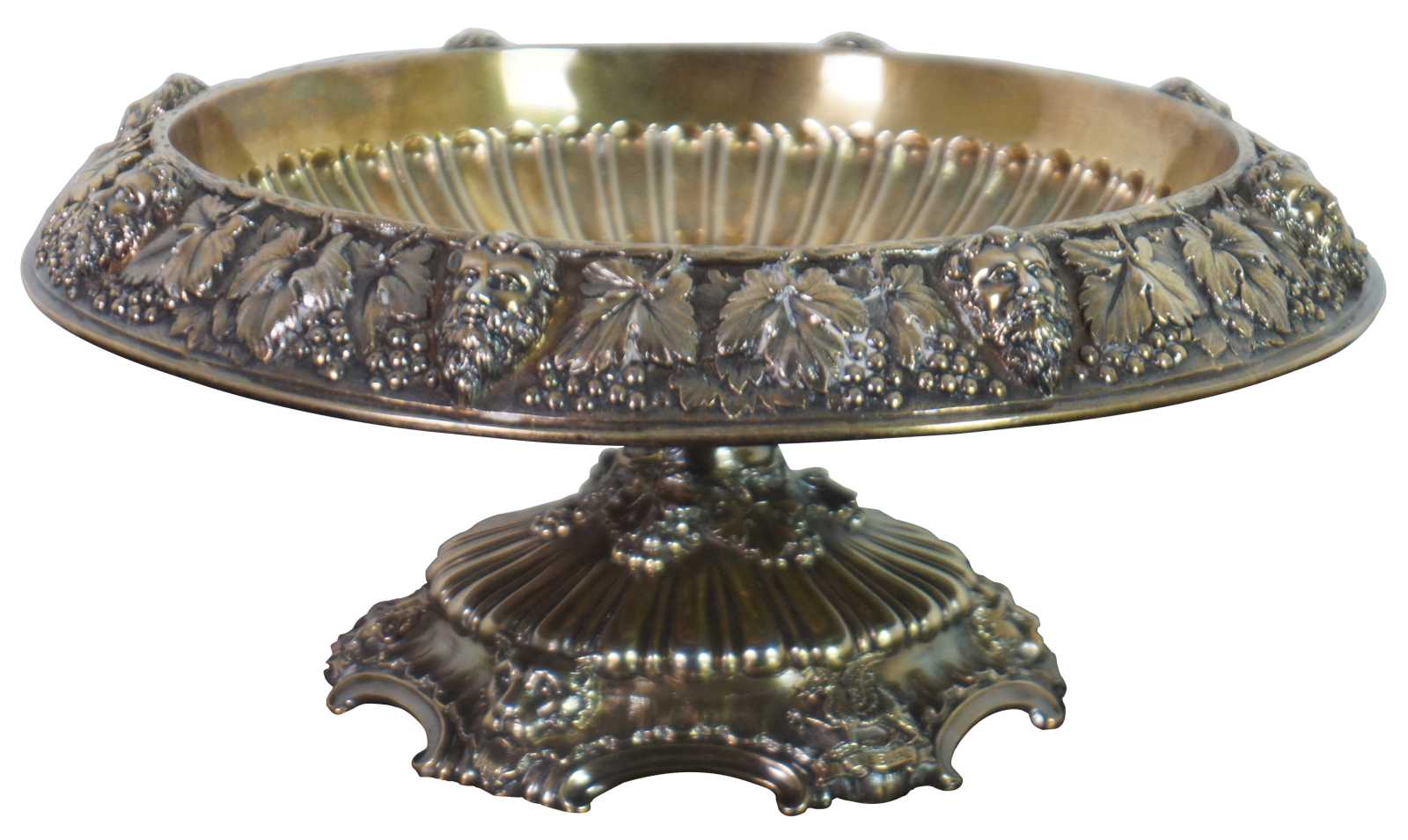
Shipping:
Free Shipping Included
Delivery:
Estimated 2-15 Business Days
Payments:
Credit Card, Check, Cash, PayPal, Apple Pay, Venmo
Returns:
30 Days 100% Money Back Guarantee, Buyer Pays Return Shipping
Description
1902 antique English Edwardian sterling silver 925 footed centerpiece compote by Goldsmiths & Silversmiths Co of London. Features stamped and fluted design of grapevines with figural face of a bearded man (Dionysus) along the top and a fox / wolf / cat along the base accompanied by The Buffs badge, a winged griffon / gryphon / dragon referred to as East Kent Regimental Dragon Badge.
The origin of the regimental Dragon badge is obscure and as the unit dates back to Elizabethan times the search for its origin may date back as far as the 16th century. The authors of 'Records and Badges of the British Army' (1900) have this to say: 'The dragon was an old Saxon badge, said to have been borne by Harold at the battle of Hastings, and retained by the Norman kings. Queen Elizabeth, like her father Henry VIII used a dragon, the former a gold, the latter a red one, as one of the supporters of the royal arms. A silver dragon, popularly misnamed a griffin, is a familiar cognizance in the blazon of the City of London; but the dragon displayed by the Buffs, since we have any knowledge of the badge having been borne by the regiment, is not red or white but vert or green, and unlike the civic dragon, has no cross of St George upon his wings. A dragon too, figures in Dutch story, that of the golden dragon's nest referred to by Longfellow. The emblem, which was taken from the mosque of St Sophia in one of the crusades was placed in the belfrey at Bruges, whence it was carried off to Ghent by Philip Van Artefelt. Which of these dragons is the origin of the dragon badge of the Kentish Buffs, with its retrospective motto, must be left to antiquarians to decide. Cannon supposes it to have been first placed on the Colours about 1707, when the regiment was in Ghent. The badge was replaced in 1782 by the white horse of Kent but reinstated as a cap and collar badge in 1894.
Provenance : Jerome Schottenstein Estate, Columbus Ohio. Jerome was was an American entrepreneur and philanthropist, co-founder of Schottenstein Stores Corp. The Schottenstein family were Lithuanian immigrants who began an extensive business empire in the late 19th Century. Schottenstein Stores owns stakes in DSW and American Signature Furniture; American Eagle Outfitters, retail liquidator SB360 Capital Partners, over 50 shopping centers, and 5 factories producing its shoes and furniture. It also holds an ownership interest in American Eagle Outfitters, Wehmeyer in Germany, Cold Stone Creamery and The Mazel Company.
Condition
Good Overall - Some tarnish
Dimensions
12” x 5.25” / 2007.9 g / 70.83 oz (Diameter x Height)
You May Also Like